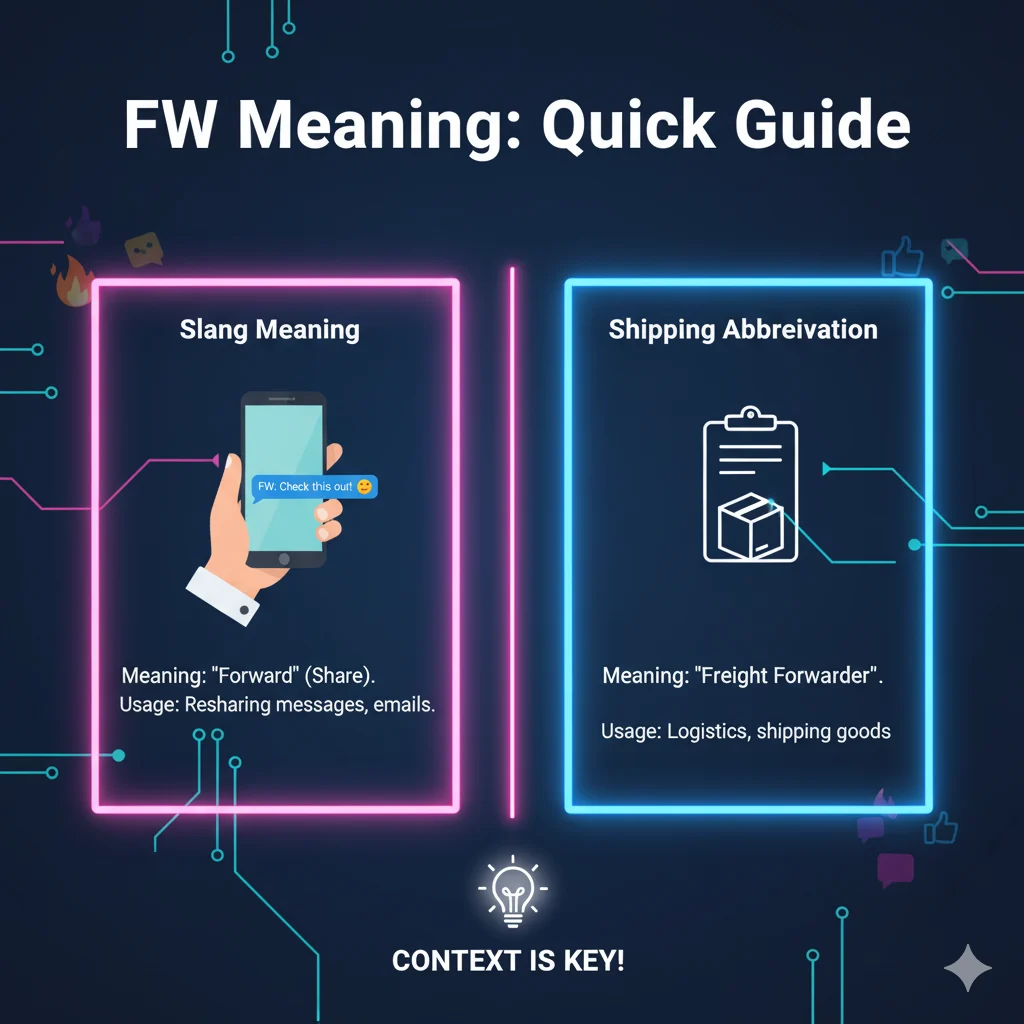Introduction

In today’s digital era, abbreviations dominate our daily communication. One such acronym, FW, appears frequently in emails, text messages, social media posts, and even technical discussions. Understanding FW is more than just knowing internet slang—it can prevent miscommunication, improve professional interactions, and help you stay current in tech conversations.
From forwarding emails to firmware updates, FW has multiple interpretations, each dependent on context. This article will explain the definition, origins, common uses, and alternatives for FW, clarify misunderstandings, and offer actionable tips for applying it correctly. By the end, you’ll confidently recognize and use FW in all its forms, making your digital communication clearer and more effective.
Definitions & Meaning
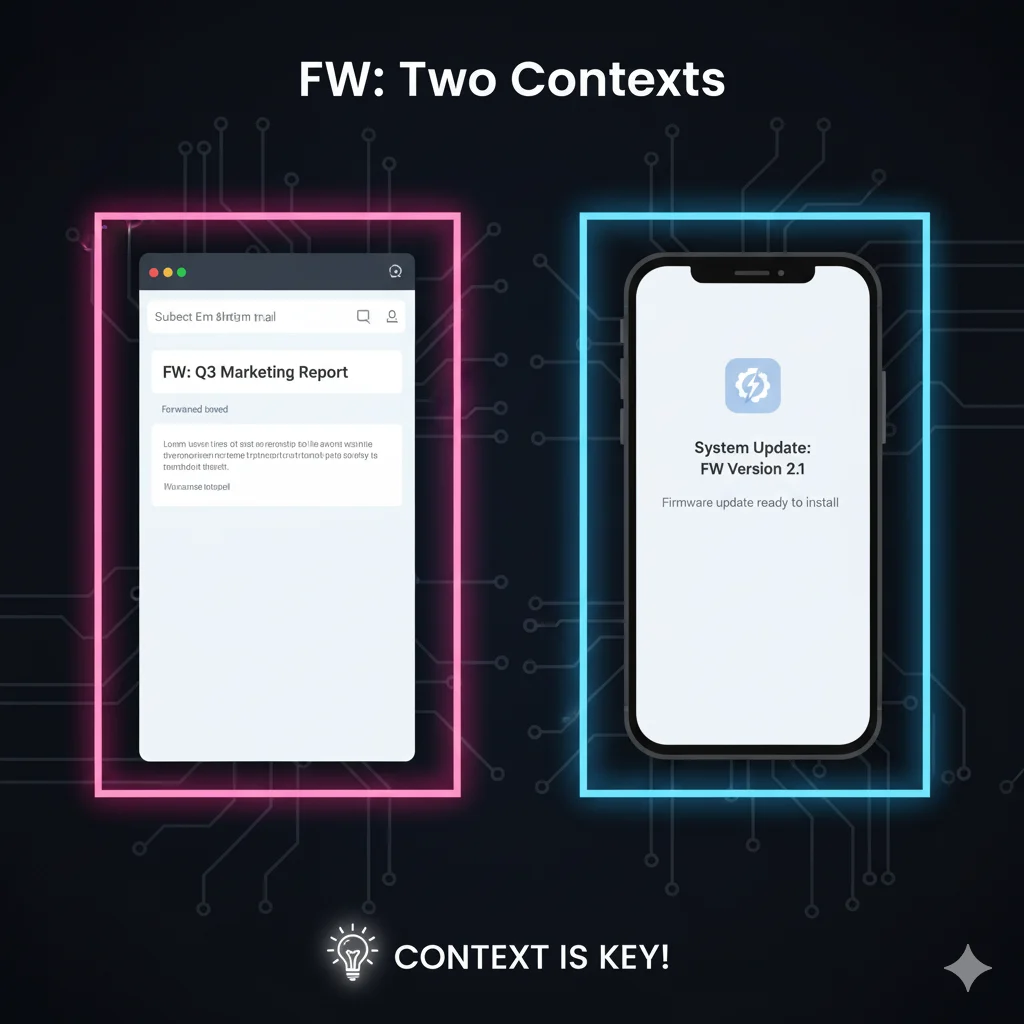
FW is most commonly known as “Forward”, primarily used in email communication to indicate that a message has been passed from one recipient to another. For example:
“FW: Team Meeting Notes – Please review before the call.”
Beyond emails, FW can also mean “For What”, “Family & Work”, or “Firmware” in technical contexts. For instance, gamers or tech enthusiasts may write:
“Install the latest FW to fix console issues.”
Understanding FW in context is crucial—misinterpreting it could lead to confusion in professional emails, casual chats, or technical instructions.
Origins & History

The abbreviation FW originated with the rise of email in the 1980s and 1990s. Early email users needed a simple way to mark messages that were being forwarded. Using FW before the subject line quickly became a standard, allowing recipients to track message chains efficiently.
As digital communication evolved, FW spread to instant messaging, social media, and even technical jargon. In tech, FW is now widely used to refer to firmware updates on devices, reflecting how acronyms adapt across contexts. This evolution highlights the dynamic nature of internet language—brevity and clarity remain central.
Usage in Different Contexts
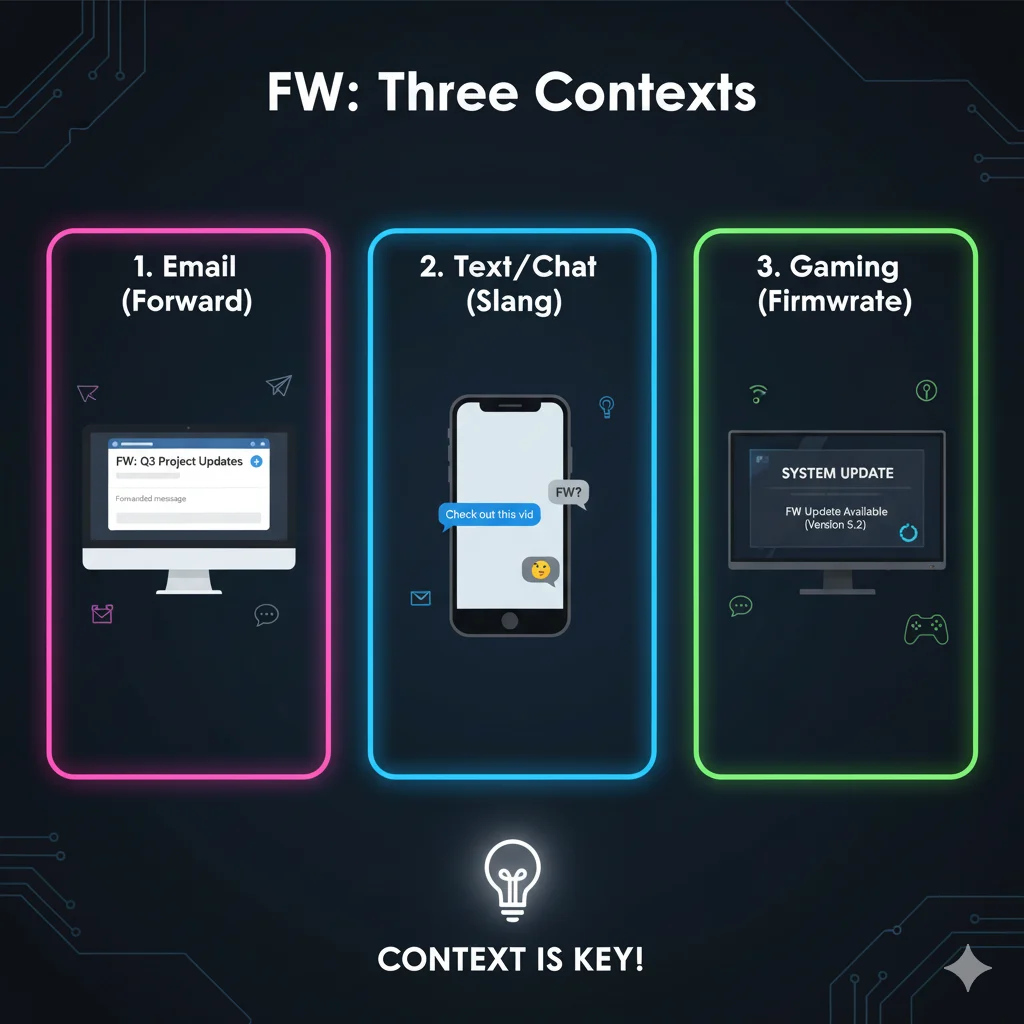
Professional Communication
In workplaces, FW indicates forwarded emails, maintaining transparency and clarity. For example:
“FW: Quarterly Sales Report – Review before the meeting.”
Using FW correctly demonstrates proper messaging etiquette and helps colleagues track original content efficiently. For formal emails, you can also use alternatives like FWD or Forwarded Message to enhance clarity.
Social Media & Texting
On platforms like Twitter or WhatsApp, FW can have alternative meanings. Users may say:
“FW this post” – meaning forward or share the content.
“FW?” – shorthand for ‘For What?'”
Context determines meaning. Misunderstanding FW in casual conversations can lead to miscommunication, so paying attention to surrounding text is key.
Technical & Gaming Contexts
Tech enthusiasts and gamers often use FW to mean firmware, especially regarding device updates. For example:
“Update your console’s FW to improve performance.”
Here, FW has nothing to do with forwarding messages. Recognizing such distinctions ensures effective communication across platforms.
Common Misunderstandings & Clarifications
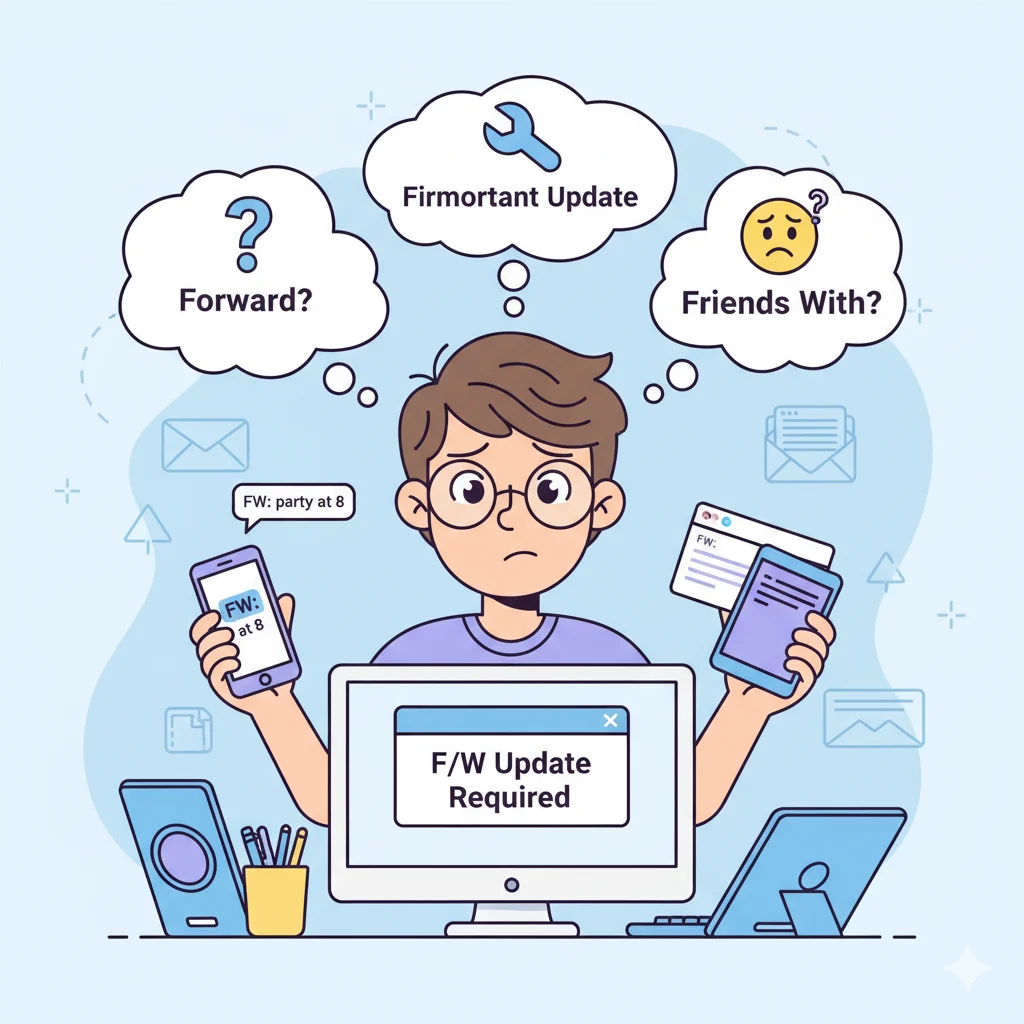
Many people assume FW always means “Friend Wanted” or casual slang. In reality, its meaning varies by context:
- Emails: Forwarded messages
- Texting: Can be “For What” or “Forward”
- Tech: Firmware updates
Tips to avoid confusion:
- Consider the platform—email, social media, or tech.
- Ask for clarification if uncertain.
- Use full terms like Forwarded Message in professional settings.
Alternatives & Synonyms
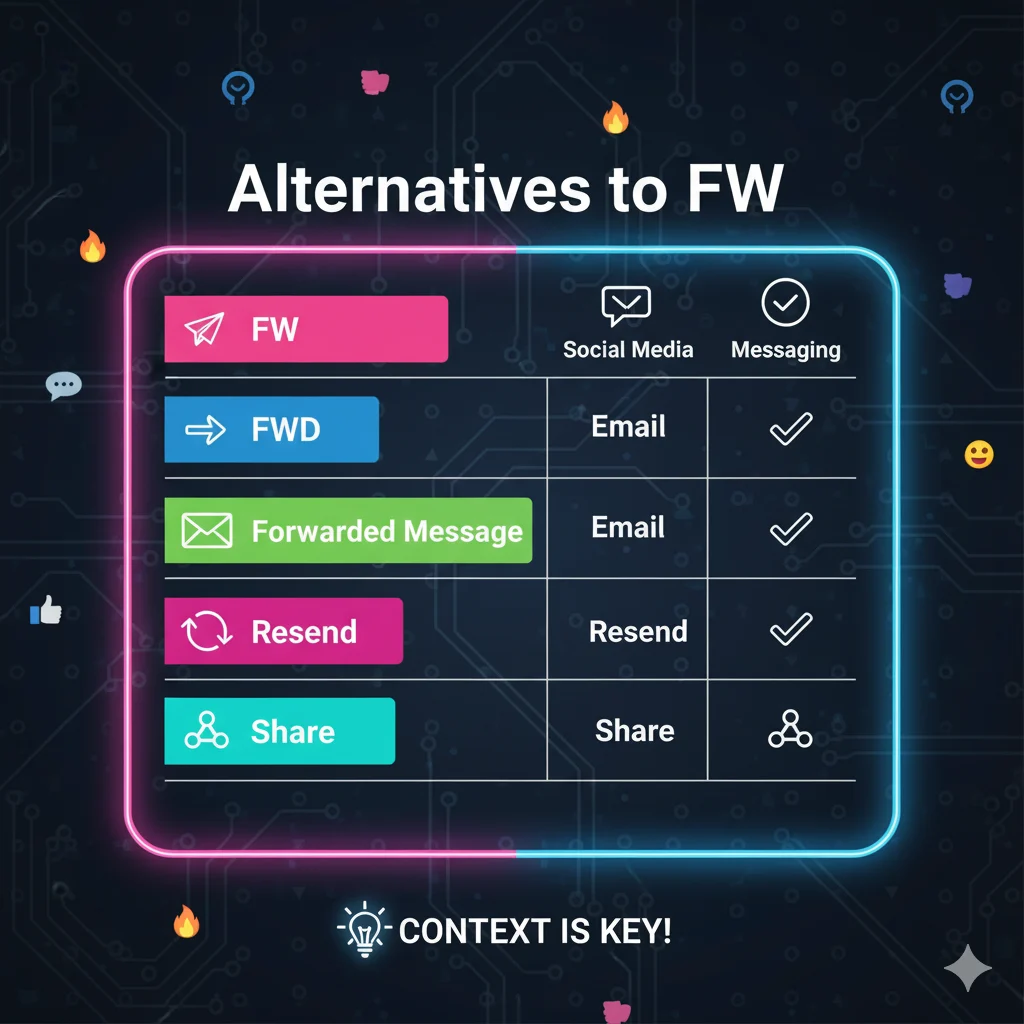
While FW is widely recognized, alternatives provide clarity:
- FWD – another common shorthand for forward
- Forwarded Message – formal alternative in emails
- Resend – when sending the same content again
- Share – suitable for social media
Using these alternatives reduces ambiguity and ensures proper communication across platforms.
Frequently Asked Questions (FAQ)
1. What does FW stand for in emails?
It shows a message has been forwarded from another recipient.
2. Is FW the same as FWD?
Yes, both indicate forwarded messages.
3. Can FW mean something else?
Yes—depending on context, it can mean “For What,” “Family & Work,” or “Firmware.”
4. How do I use FW professionally?
Use it at the start of the email subject line when forwarding messages. For clarity, alternatives like Forwarded Message or FWD can also be used.
5. Can using FW cause misunderstandings?
Yes, especially in informal or cross-context situations. Always consider context.
6. Is FW used in text messages?
Yes, but its meaning varies. Look at surrounding text for clues.
7. Are there alternatives to FW for forwarding?
Yes—FWD, Resend, Forwarded Message, or Share depending on context.
Conclusion
FW is a versatile abbreviation that spans professional emails, casual texting, social media, and technical contexts. Understanding its meaning in each scenario helps avoid miscommunication and enhances clarity. Whether you’re forwarding a work email, sharing a post, or updating firmware, recognizing the correct interpretation of FW ensures you communicate effectively. By applying the tips in this guide, you’ll use FW confidently and appropriately across all digital platforms. Clear communication has never been simpler—or faster.

